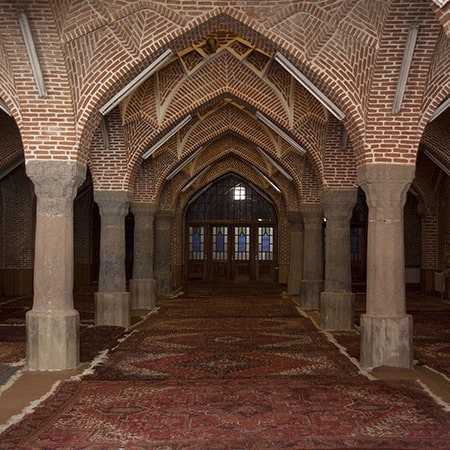
Tabriz
The biggest city of the northwestern part of Iran which is the center of business, politics and industry in the area. This city had been the capital city of Iran during different historical eras but its most glorious day dates back to the Ilkhanate ruling Iran. It once again reached its glory in the Qajar dynasty and turned into an innovative city in Iran.
Tabriz is rich in history, a variety of cultures and many traditional foods.
Because of its innovation in fields such as medicine, education, culture and its city development strategies it is named “the city of firsts”.
History
Tabriz’s history is full of ups and downs during different periods. The city of Tabriz has been destroyed and renewed many times throughout history by natural disasters or invaders, the present building of this city, back to the Parthian and Sasanian periods and It was also known at the beginning of the Islamic era. Tabriz will flourish during a 400-year-old government. This city peaked at the height of its glory during the rule of the Ilkhanites. In this period Tabriz was the capital of a vast territory from the Nile in the northeast of Africa to the Amu Darya in Central Asia. The city of Tabriz has always been the center of cultural and commercial exchanges in the region due to its strategic position and today it is one of the industrial centers of Iran. This city has been the source of many social, cultural and industrial developments in Iran over the last two centuries and played a key role in developments such as the Constitutional Revolution and the 1979 Revolution, and the modernization of Iran.
The modern language of the people of Tabriz is known as Azeri, Azerbaijani. Before the Turkish language came to the area, the people of Tabriz spoke in Azeri language, which was popular in Azerbaijan until the 11th century. The Azeri language was in Persian and close to the dialects of the south of the Caspian Sea and Tati.
Most of the people of Tabriz are Muslim and twelve Shia followers. Shah Ismail I during coronation in the city of Tabriz in 1501, Declared the Shiite religion of the Twelve Indians as the official religion of Iran, despite the fact that at that time the majority of the inhabitants of the city were Sunni. However, there are feasts of Armenian Christians with 1 097 people and Assyrians with 503 people, Zoroastrians with 26, other Christians with 17, and Christians with 5 inhabitants.
Geographies
Tabriz’s climate is dry steppe with warm and dry summers and cold winters. Tabriz has a semi-arid climate with regular seasons. The annual precipitation is around 280 millimeters (11 in), a good deal of which falls as snow during the winter months and rain in spring and autumn. The city enjoys mild and fine climate in spring, dry and semi-hot in summer, humid and rainy in autumn and snowy cold in winter. The average annual temperature is 12.6 °C (54.7 °F). Cool winds blow from east to west mostly in summer. Usually, during the summer, rainfall is very small and rarely occurs.
Location of the city
In 1395, the population of Tabriz was 1, 558, 693, the 6th most populous city of Iran after Tehran, Mashhad, Isfahan, Karaj and Shiraz. This city was the most populated city of Iran until the end of the kingdom of Nasir al-Din Shah Qajar. Due to its economic, industrial, administrative and international credit, Tabriz is considered to be the most migratory city in the East Azerbaijan province. The new Sahand new town is located 24 kilometers southwest of Tabriz and on the Tabriz-Azarshahr road to capture the city’s overflow to create a new focus for population and employment and ensure urban development.
Population
The city enjoys mild and fine climate in spring, dry and semi-hot in summer, humid and rainy in autumn and snowy cold in winter. The average annual temperature is 12.6 °C (54.7 °F). Cool winds blow from east to west mostly in summer. Usually, during the summer, rainfall is very small and rarely occurs.